SOTA summit: N/A
Location: Lat/Long 10.688425, -85.234327 Guayabo, Costa Rica
Contest: ARRL DX SSB, 48 hours over March 3 and 4th, 2018
Portable operation: Suitecase DXPedition
Radio: Elecraft KX3, PX3 Panadapter and KXPA100 operating at 100 watts SSB
Antenna: Buddipole dipoles, verticals and “experimental” Yagis and OCF wire dipole
Bands used: 10m, 15m, 20m, 40m, 80m and 160m
Hike: None….we sat for 48 hours (ouch)
Solo operation: No, contest team was Matt (K0BBC), Chris (W6HFP), Harold (WJ1B) and me W6PNG
Recommend: Yes
ATT Coverage: Yes
Photos: Copyright Paul Gacek 2018
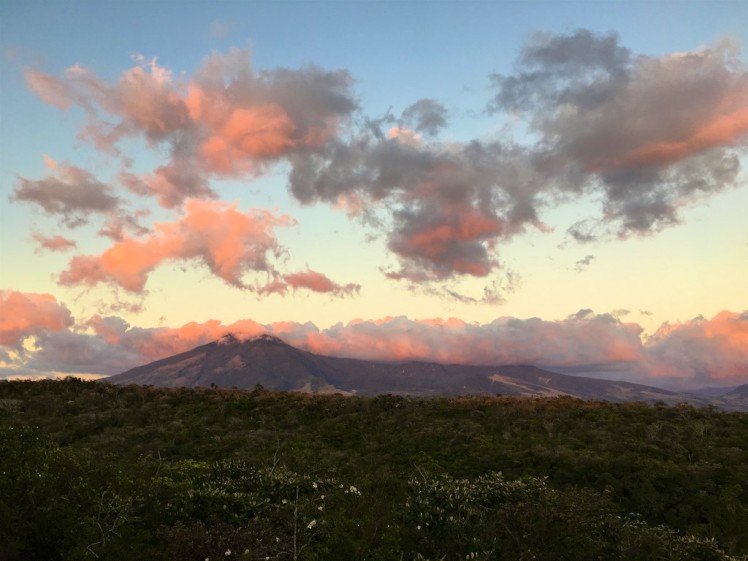
We’ve erected the best portable antennas we could bring, we’ve spent time laying out the station for maximum ergonomics, we’ve verify things work including ourselves through numerous “practice” contacts over the previous days.
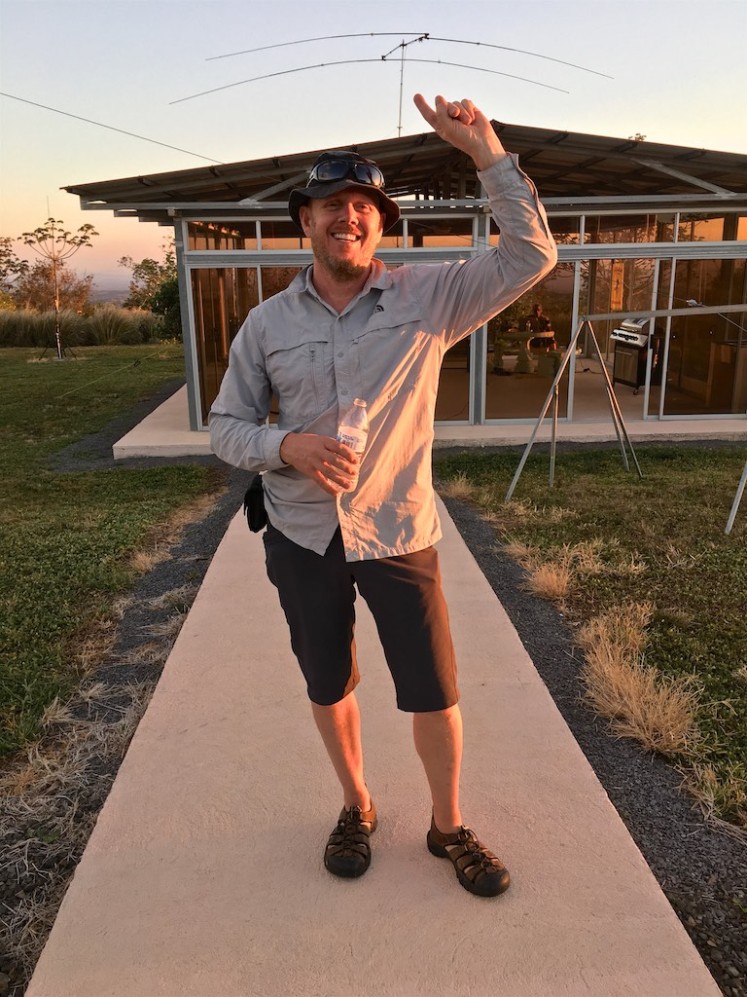
Game on. It’s 6pm, the sun has set, I’m up first and launch us on a forty eight hour non stop run. The call signs roll in, are logged and we are excited at the frenetic pace and especially excited that 20m is holding up to North America, twenty five hundred miles north.
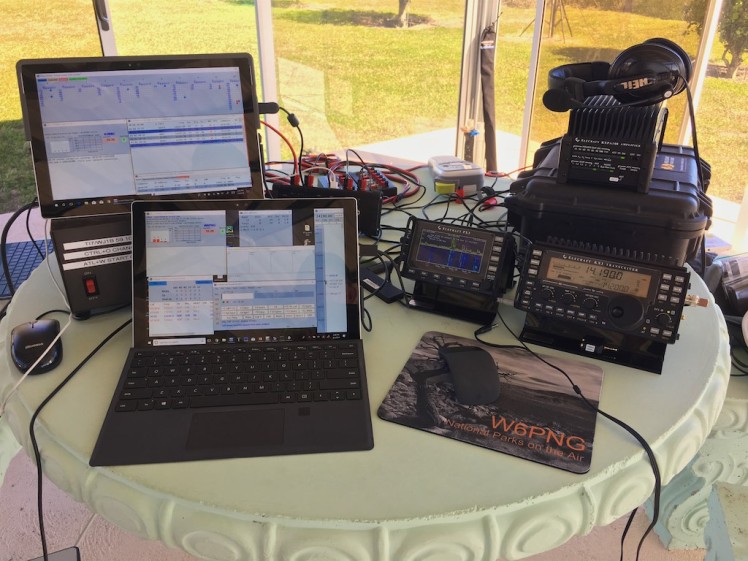
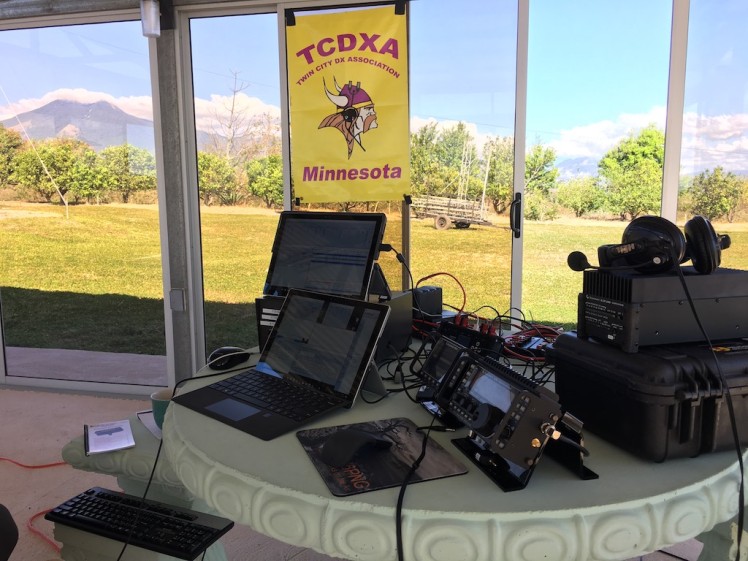
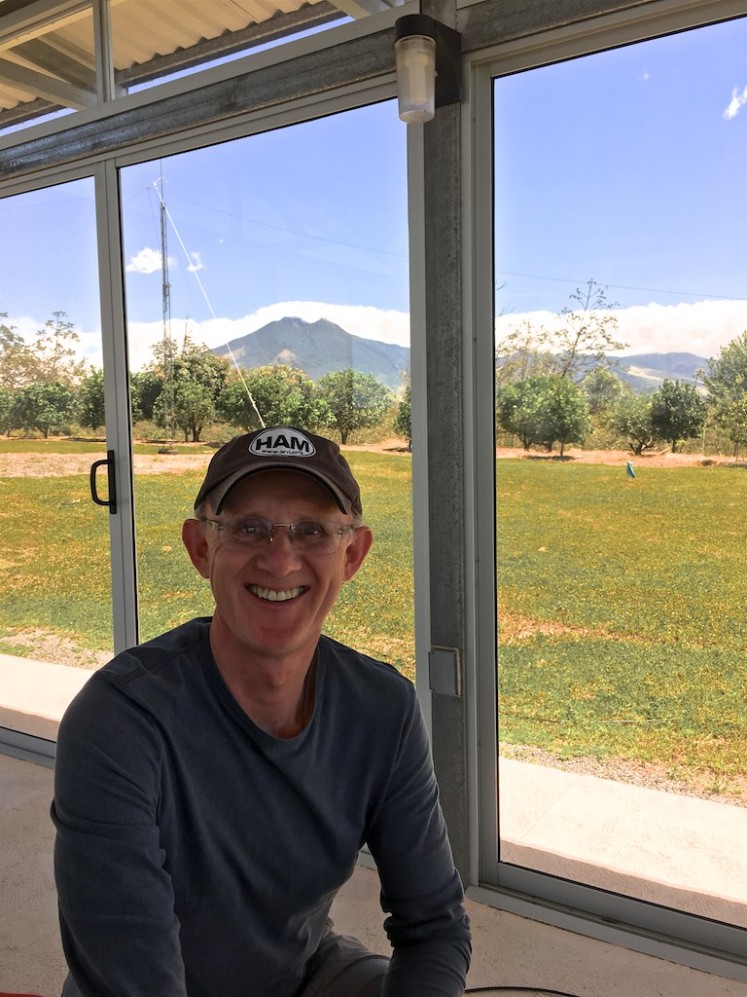
It’s dead, the radio is down and we are dead in the water! Ten minutes in and our frenetic run comes to an abrupt end. My energy is transferred to a bark “….who pressed what, we have no power to the radio, we’ll lose our run frequency….” What seems like an eternity is really only a minute or two while Matt and Chris re-wire things and I’m back on the air. I regain my rhythm and as my ninety minute shift ends, I’ve logged almost 150 contacts and I’m momentarily declared “The Man”. That was fun, that was quit the adrenaline rush and why we have come.
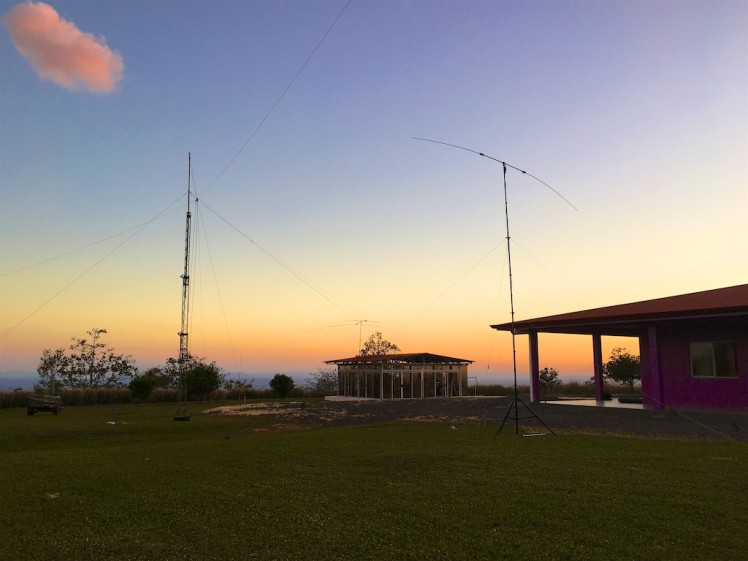
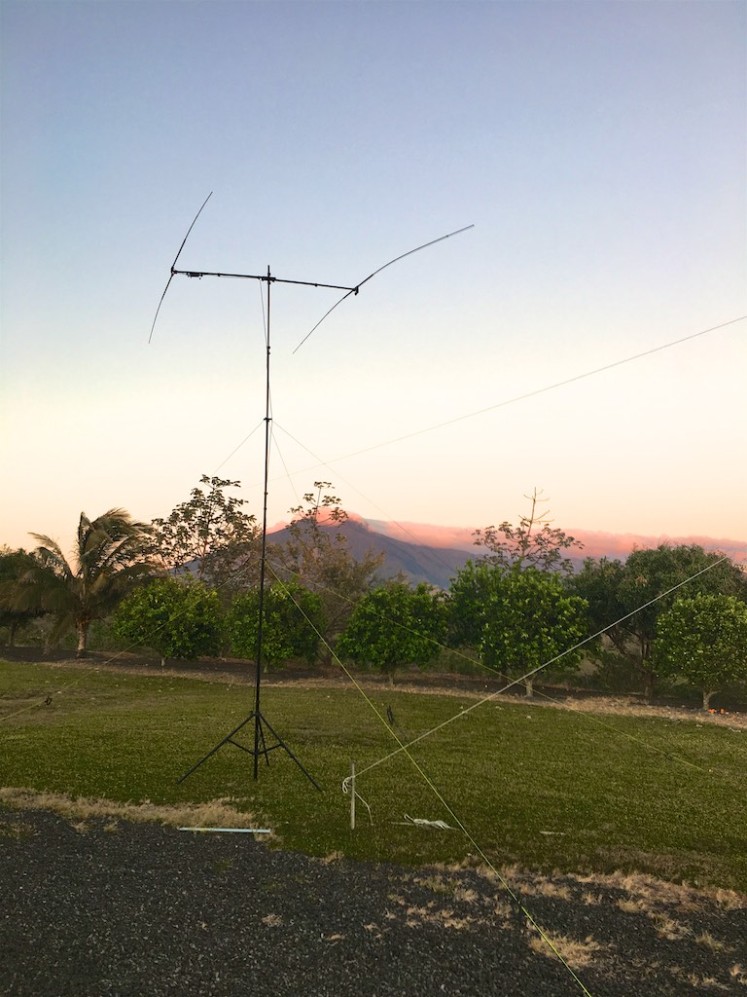
The global ham radio community likes to contest. So much so that you can pretty much find a contest any weekend of the year and sometimes quite a few mid week. They vary in length, vary in “modes” such as voice, talking to the other participant, morse code, sending dits and dahs over the airwaves all the way through to digital transmissions using computers at either end to encode and decode messages sent one the airwaves by the radios. The objectives vary but all have one common aspect, a point system and the goal is to get the highest point score. For some contesting is a very serious pursuit and they have antennas that cause many of us to drool and have skill levels built up over years that most of us are in awe of and for these hardened participants it’s about one thing; WINNING! I’m nowhere near that category. I’m a neophyte and this is my first serious contest and while I want to do well I’m here to have fun!
The objective of this contest is to encourage the US and Canadian ham radio community to interact with their global brethren. It’s about creating awareness and understanding of how best to communicate with hams in Europe, Asia, Australasia and us in Central/South America. Herein lies the magic and difficulty of ham radio. Some frequencies might work well during the day in a certain direction (say to Europe) and different frequency ranges at night. Some frequency ranges (bands) might be perceived as “dead” given where we are in the 11 year sun cycle but we may get a very welcome surprise and discover that a “dead” frequency range (band) is a money make. Simplistically you get points for making a valid contact (i.e from the US/Canada to anywhere in the world such as Costa Rica) and then a multiplier for each new foreign destination (for example England, Japan, Russia or Brazil). As a foreign station our multiplier is contacting hams in each of the lower 48 states and Canadian Provinces.
Lots of factors come into play to do well. Choosing the best band especially as we have one radio and it can only work on one band at any given moment and not all. Each band requires a specialized antenna such as a directional dipole or yagi. Antennas vary in size and we aren’t really in a position to bring an efficient antenna for the night time bands (160, 80 and 40m). Clearly, we want to concentrate on gathering as many contacts but these ideally should be spread across as many states and provinces as we can muster. We have four ham operators who definitely want frantic shifts logging hundreds of contacts but also need to pace them through the inevitable long boring dry spells such as the graveyard shifts during the wee hours of the night. Clearly planning ahead and then reacting in realtime can and does make a big difference. Mat (K0BBC) is our leader and has created an initial operating schedule for us and bands to focus on.
To give you an idea how serious the ham community takes contesting, a variety of contest logging software has been developed by the community. It’s what we use to record the call sign of the other person we contacted for points, the frequency, time of day etc. We are using a piece of software (N1MM) that is remarkable. It’s networked and can support multiple operators all at different laptops, it synchronizes the logs over a wifi or wired network and essentially provides a running summary of progress to all. Its summary information is tailored to the specific contest and in our case provides a graphic summary of the states and provinces we have contacted that now represent multipliers to our score. This helps us see how we are doing and possibly point antennas award a hard to contact state such as Montana given its sparsely populated or pick a band that might do well reaching out to New Brunswick Sometimes serenity enters in. Hours have passed in the contest and I commented to a ham in Massachusetts that so late in the game we hadn’t added Rhode Island to our list. Moments later Rhode Island was in my log. Maybe he called a friend in Rhode Island.
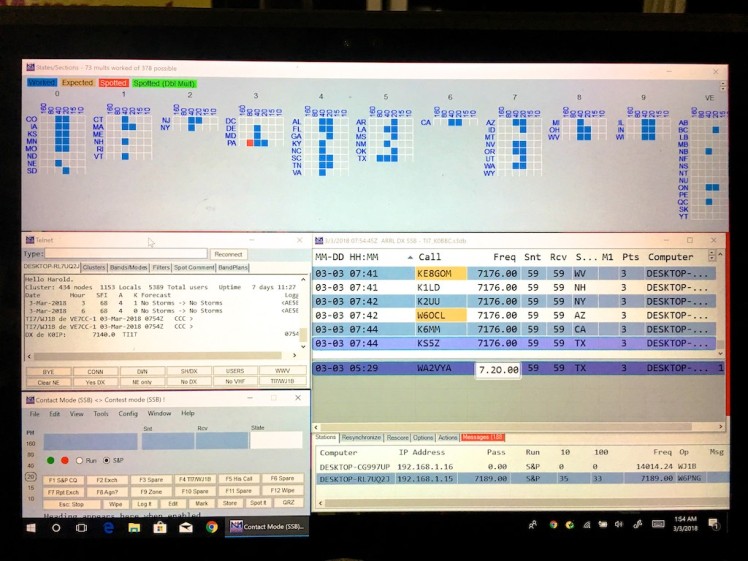
March in north western Costa Rica is windy. At night the wind would howl through our villa blowing open bedroom doors. Very spooky and not great when you only have a handful of hours in the sack before heading back for another shift. Our glass sided gazebo where we operated from was pounded relentlessly at night and I sometimes wondered if the glass panels would blow in. The antennas twisted and jerked in the wind that gusted thirty or forty miles an hour at points leaving us slightly more anxious. During one of my graveyard shifts with my team mates tucked up in bed, I shared the gazebo with others that wanted to escape the elements. A millipede seemingly as long as my arm made a bee line across the floor watched by the locust the size of my hand that I was convinced single handily had eaten the Sahara of it’s vegetation.
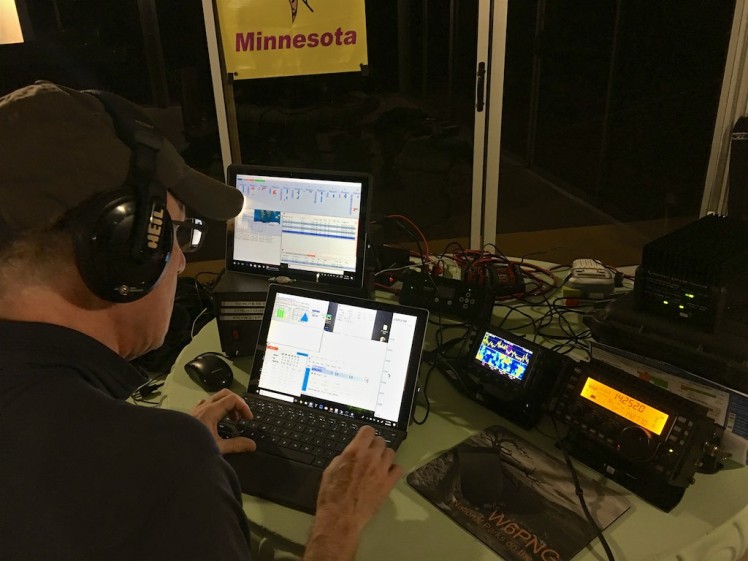
No comments:
Post a Comment